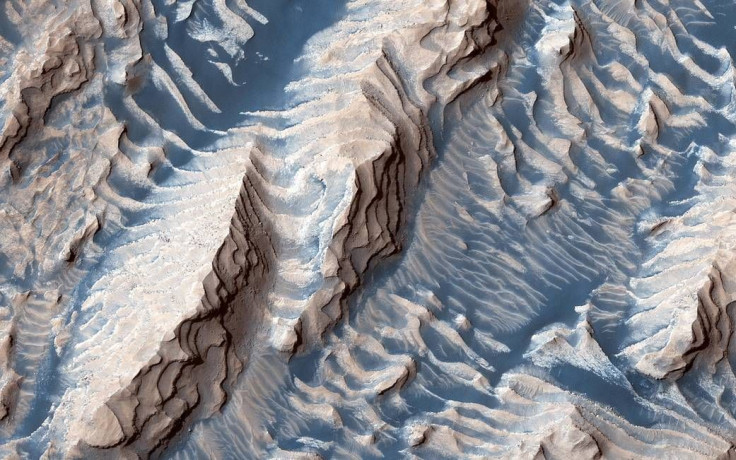NASA Discovers Salt Lake On Mars: Can It Prove Life Exists On Planet?

The NASA rover Curiosity has just captured a significant photo that gives scientists an important insight on what happened to the vast waters of Mars which existed billions of years ago.
According to a report from Space.com, NASA revealed that they might have just snapped evidence of the Red Planet’s Great Drying - a period when Mars’ vast water reserves started drying up into space.
Per the report, the NASA Curiosity detected high levels of sulfate salts among the rocks found inside the Gale Crater and could very well prove that there were oceans on Planet Mars in the past. The study stated that Gale once had a lake-and-stream system and that the salt deposits showed that water likely concentrated in the crater when the water started evaporating.
Now the study also showed that evaporation may have been a normal occurrence during Mars’ ancient past brought about by a regular climatic change caused by shifts in the planet’s axial tilt.
"Alternatively, a drier Gale lake might be a sign of long-term, secular global drying of Mars, posited based on orbital observations," scientists of the study said. The findings were published recently in the journal Nature Geoscience.
The significance of the study is not lost in the space community - it showed how Mars drastically changed from a warm, ideal planet to the cold and dusty one that we all know today. The study showed that Earth’s cousin not only had river and lake systems but also vast oceans covering its northern hemisphere.
However, based on the salt deposits discovered, the planet started changing roughly 4.2 billion years ago. The planet was said to have lost its global magnetic field which made it vulnerable to solar wind and eventually evaporated most of the water on Mars.
Because of this, most of the water on the planet’s surface disappeared, making it drier and colder. To put things in perspective, Mars’ atmosphere is just 1 percent of the Earth’s density.
Based on the new study, one can’t help but wonder that with all the water on Mars, there is a big chance that life also existed during those times. The rocks with enriched sulfate salts contained trace elements of building blocks for life.
The new study complemented previous research that shows "bulk enrichments" of calcium sulfate are abundant to about 500 feet of the Murray Formation while some rocks contain high magnesium sulfate concentration on thinner sections of the region. The same substance can be found along the area of the Gale Crater. The study suggests that because of this, the ponds may have been habitable.
"Sulfur is a basic element for life. And we show that there was sulfate available in the water," William Rapin, a planetary scientist at the California Institute of Technology in Pasadena and lead author of the study, said.
© Copyright IBTimes 2024. All rights reserved.





















